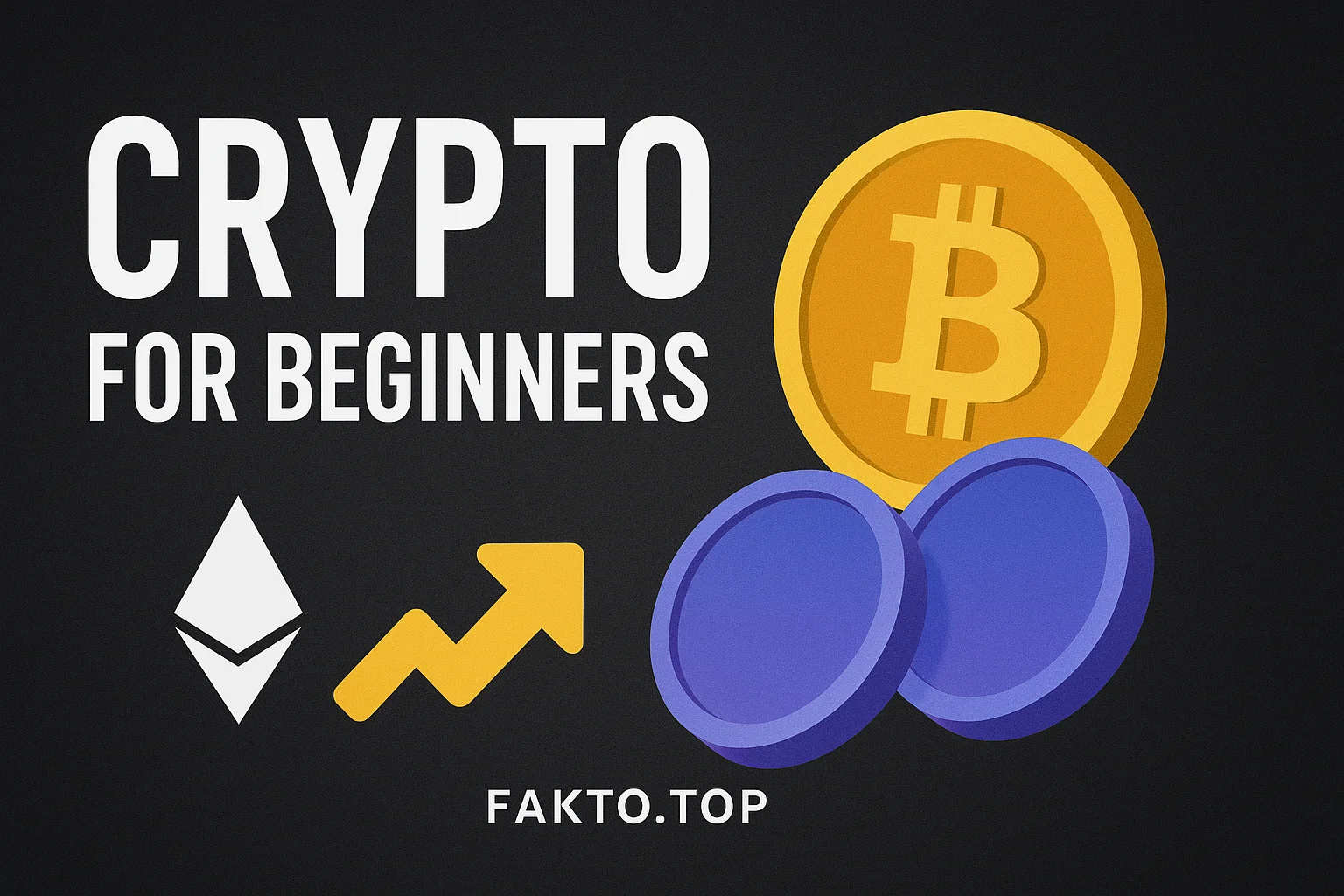5 Simple Ways to Earn Solana & Ethereum as a Beginner (No Mining, No Big Investment)
Here are five practical ways to earn crypto as a newbie, no hype needed.
Let’s be honest — crypto can feel like a wild mix of gold rush and science fiction. You hear stories of people getting rich overnight, but no one tells you how to actually earn your first few dollars safely. The truth is, earning Solana (SOL) or Ethereum (ETH) as a beginner doesn’t need hype, mining rigs, or blind faith. It needs curiosity, a few small steps, and patience. Getting your first bit of crypto — even if it’s just $3 — is a real milestone, because it means you’ve learned how Web3 works from the inside.

This guide cuts through the noise. We’ll walk through five real-world, low-risk methods that don’t require you to spend big or code smart contracts. These are the same steps early crypto users take to learn by doing. Each section gives you a simple walkthrough, a realistic case study, and a reality check showing what effort equals what reward. No hype. No “to the moon.” Just practical progress — one wallet at a time.
Let’s start with something every beginner can try: getting free Solana safely through airdrops and faucets.
How to Get Free Solana Sent to My Coinbase Wallet (Airdrop & Faucet Guide)
Yes, you can get free Solana — and no, it’s not a scam if you know where to look. Most “get rich fast” crypto ads are junk, but a few legitimate programs exist to help beginners get small amounts of crypto while learning. Think of it like a training course that pays you pocket change to learn how wallets, transactions, and Web3 tools work.
Two real ways to earn Solana safely as a total beginner are Coinbase Earn and legit Solana faucets. Let’s break those down.
1. Coinbase Earn: Learn-and-Earn Solana
If you already have a Coinbase account, you’re halfway there. Coinbase runs “Earn” campaigns where you watch short educational videos and answer quiz questions. Once completed, they deposit a few dollars’ worth of crypto directly into your Coinbase wallet. When Solana campaigns run, they usually offer $3–$10 in SOL for less than 10 minutes of effort. It’s not a jackpot — but it’s 100% legit and a perfect first step to owning your first Solana.
Steps:
- Sign up or log in at Coinbase Earn.
- Verify your identity (yes, Coinbase requires KYC for legal reasons).
- Find the Solana course when available — or another project paying in crypto.
- Watch short clips and answer the quizzes correctly.
- Claim your free SOL instantly in your Coinbase wallet.
This teaches you how wallet balances change, what gas fees are, and how to transfer tokens. For many beginners, this is the moment crypto stops being abstract and becomes real value.
2. Legit Solana Faucets (No KYC)
If you prefer to stay anonymous or don’t want to submit identity documents, try a Solana faucet. Faucets give out tiny crypto rewards — usually a few cents — in exchange for simple tasks like solving captchas or viewing short ads. It’s not glamorous, but it’s honest, and it helps you practice wallet transactions without risk.
One example is SolFaucet.net (a known legit faucet). You connect your Phantom wallet — the most popular Solana wallet extension — and claim small rewards every few minutes. After about an hour, you might have earned roughly $0.15 in SOL. That’s tiny, yes, but you’ll now understand how to receive and send crypto from your own address — a crucial first skill in Web3.
Reality Check: Time vs. Reward
Before you jump in, understand this clearly: faucets are not designed for income; they’re designed for practice. What you gain isn’t money — it’s hands-on crypto experience without losing a dime. In the long run, this knowledge is more valuable than the few cents you earn.
| “Free” Earning Method | SOL Earning Potential | Time Commitment | Requires KYC? |
|---|---|---|---|
| Learn-and-Earn Programs (e.g., Coinbase) | Low (One-time $3–$10) | 10–30 minutes total | Yes (Exchange verification) |
| Micro-Task Faucets (e.g., SolFaucet) | Extremely Low (pennies/hour) | High (repetitive tasks) | No (Wallet address only) |
| Free-to-Play Solana Games | Low/Variable | Medium (daily engagement) | No |
The bottom line: getting free SOL isn’t about income — it’s about onboarding. Once you’ve done one faucet claim or earned your first $3 SOL on Coinbase, you’ve mastered wallet use, token transfers, and spotting scams. That foundation will make every next step in crypto safer and easier.
Now that you’ve got your first bit of Solana and understand how “earning” can also mean “learning,” let’s move into something slightly more passive — earning Ethereum while you sleep.
Best Apps to Earn Ethereum Passively for Beginners (Under $50)
Here’s the truth: you can earn Ethereum passively even if you’re starting with pocket change. But let’s kill the fantasy early — passive income in crypto is never “free money.” What you’re doing is lending or staking your ETH to help secure networks or provide liquidity, and in return, you earn a small percentage yield, usually called APY (Annual Percentage Yield). For beginners, the simplest, safest ways to do this are through Centralized Exchanges (CEXs) or beginner-friendly apps with built-in staking options.

If you’ve got around $50 to experiment with, that’s enough to start earning small, steady rewards and — more importantly — understand how crypto income works without facing big risks. Think of this as your first digital savings account that pays in ETH instead of dollars.
1. CEX Staking: The “Set and Forget” Option
Staking through a centralized exchange like Kraken or Coinbase is hands-down the easiest passive earning method for newcomers. You deposit ETH, enable staking, and the platform does all the technical heavy lifting. You’ll earn around 3–5% APY depending on the exchange and network conditions.
Example: You deposit $50 worth of ETH on Kraken. At 4% APY, you’ll earn about $2 per year if the price stays stable. Not thrilling, but the simplicity and security (for a regulated CEX) make it ideal for learning.
Steps:
- Create an account on Kraken or Coinbase and verify your identity.
- Deposit or buy ETH directly using your bank or card.
- Enable ETH staking from the “Earn” or “Rewards” section.
- Review the displayed APY and confirm the lock-up terms (some exchanges let you unstake anytime).
- Check your balance periodically — you’ll see rewards accumulate automatically.
This is the “set and forget” version of crypto income — you stake once and let the system handle it. No gas fees, no manual management, and you can track earnings daily in-app.
2. Crypto Savings Accounts
Some platforms like Nexo or CoinRabbit offer what looks like staking but is technically lending. You deposit ETH (or stablecoins like USDC), and the platform lends them to vetted borrowers. You earn smaller interest — typically 1–3% APY — but the upside is that you can often withdraw anytime without penalties.
Important difference: in CEX staking, your ETH helps validate transactions on the Ethereum blockchain. In savings accounts, your ETH is loaned out, so you rely on the platform’s solvency. Always research before trusting any app with your funds.
3. Liquid Staking (Intermediate Option)
If you’re feeling adventurous and ready to learn something slightly more technical, platforms like Lido or Rocket Pool offer liquid staking. You deposit ETH, and in return, you receive a token (like stETH or rETH) that represents your staked balance. These tokens continue earning yield while you can use them in DeFi (Decentralized Finance) apps.
This method has higher yields (~4–6%) but introduces what’s called smart contract risk — if the protocol’s code is hacked, funds can be lost. Still, Lido is battle-tested and widely trusted, making it a solid next step once you’re comfortable with wallets.
Reality Check: The Passive ETH Earning Table
Here’s how the most common beginner-friendly options compare in simplicity, returns, and risks:
| Earning Method | Initial Investment | Ease of Use (1–5) | Typical APY (Approx.) | Primary Risk for Beginners |
|---|---|---|---|---|
| CEX Staking (e.g., Kraken/Coinbase) | As low as $1 | 5 (Easiest) | ~3% to 5% on ETH | Exchange/Custodial Risk (If the exchange fails) |
| Liquid Staking (e.g., Lido) | Variable (plus gas fees) | 3 (Intermediate) | ~4% to 6% on ETH | Smart Contract Risk (Code vulnerability) |
| Crypto Savings Account (Not true staking) | As low as $1 | 4 (Very Easy) | ~1% to 3% on stablecoins | Lending/Platform Risk |
Case Study: The $50 ETH Experiment
Let’s imagine you deposit $50 worth of ETH into Coinbase’s staking program. Over a year, you’d earn roughly $2 in rewards if the price of ETH stays the same. Not much, right? But here’s what you’ve really earned: experience with staking mechanics, knowledge of APY fluctuations, and familiarity with how rewards appear in real-time. This builds your muscle memory for later, when you’re ready to scale up or try DeFi protocols like Aave or Compound.

The takeaway: staking small amounts of ETH isn’t about instant profit. It’s about participating in the network and learning safe yield strategies. Once you’ve got your staking rhythm, you’ll understand what “passive income” in crypto really means — slow, steady, and transparent.
Next, we’ll look at an even smaller-scale approach: staking just 0.01 ETH. Does it make sense for a total beginner, or is it just symbolic? Let’s break it down realistically.
Is it Worth Staking 0.01 ETH for a Beginner? (The Small-Investor Staking Case)
Short answer: yes, but mostly for learning. Staking tiny amounts of Ethereum — like 0.01 ETH, which is roughly $20–$25 depending on market price — won’t make you rich overnight. The rewards are tiny, often just a few cents per month. But the real value is understanding how staking works, how gas fees affect transactions, and how to manage your tokens safely.
1. Centralized Exchange Staking (Easy Start)
If you want a no-hassle approach, CEX staking is still king for beginners. Deposit 0.01 ETH into Kraken or Coinbase, enable staking, and watch your balance grow. At ~4% APY, you might earn a few cents a month — negligible, yes, but you’ll gain first-hand experience with:
- How staking works on a live exchange
- Automatic reward accrual
- Withdrawal and transfer processes
This small-scale experiment is perfect for risk-averse beginners. You can always increase your stake later, but the initial 0.01 ETH teaches the system without fear of loss.
2. Liquid Staking: Learning the DeFi Side
If you want a slightly more advanced but rewarding experience, liquid staking platforms like Lido or Rocket Pool allow you to stake ETH while keeping a tradable token (stETH or rETH) representing your stake. Even with just 0.01 ETH, you’ll learn concepts that matter long-term:
- What stETH is and why it matters
- How staking tokens can still be used in other DeFi apps
- The impact of Ethereum network gas fees on small transactions
Steps for liquid staking:
- Create or connect a wallet compatible with the platform (MetaMask or Coinbase Wallet works).
- Deposit your 0.01 ETH into Lido’s staking interface.
- Receive stETH as a “receipt” that accrues rewards automatically.
- Track your rewards or use stETH in other DeFi protocols.
Even though 0.01 ETH yields are minuscule, this exercise teaches you DeFi literacy safely. You learn about staking returns, network fees, and the difference between centralized vs. decentralized staking. Think of it as practice for the bigger stakes you’ll handle later.
Reality Check: Small Stakes, Big Lessons
Staking tiny amounts is less about money and more about skill-building:
| Staking Method | Initial Amount | Monthly Reward (Approx.) | Learning Outcome | Risk |
|---|---|---|---|---|
| CEX Staking | 0.01 ETH (~$25) | $0.08–$0.10 | Exchange mechanics, reward accrual, wallet transfers | Custodial risk, negligible at this scale |
| Liquid Staking (Lido) | 0.01 ETH (~$25) | $0.09–$0.11 | DeFi exposure, understanding stETH/rETH, small network fee handling | Smart contract risk, very low with reputable protocols |
The key takeaway: staking 0.01 ETH isn’t about immediate profit. It’s about learning, building confidence, and understanding how to navigate the crypto ecosystem safely. By the time you scale to larger amounts, you’ll already know the ropes.
Next, let’s explore a fun and practical way to earn Solana — playing free-to-play Solana games that pay small amounts of crypto. This is where learning and entertainment collide.
Solana P2E Games with No Investment to Start (Free-to-Earn Guide)
Yes, you can earn Solana by playing games — but let’s be clear: this isn’t a shortcut to wealth. Free-to-play (F2P) Solana games are more about learning how Web3 gaming works while earning small amounts of SOL. Think of it as practice meets pocket money. You’ll understand how wallets, NFTs, and token economies work, all while having some fun.
1. Picking the Right Free-to-Play Solana Game
There are dozens of P2E (play-to-earn) options on Solana, but for beginners, simplicity is key. Look for games that:
- Require no NFT purchase or upfront investment
- Have daily tasks or challenges that reward SOL
- Support Phantom wallet integration for easy withdrawals
One example is Tiny Colony Beta. You can start with zero investment, complete short tasks like daily quests or puzzles, and earn tiny amounts of SOL. Typically, it takes about 15–20 minutes daily to hit the minimum withdrawal threshold.
2. Step-by-Step Free-to-Earn
- Create a Phantom wallet and connect it to the game.
- Complete introductory quests/tutorials to earn your first tokens.
- Engage in daily tasks like solving puzzles, collecting items, or short in-game challenges.
- Withdraw SOL to your wallet once you reach the minimum balance.
- Track your progress — even small daily earnings add up over time.
3. Realistic Earnings
You might earn between $0.05–$0.50 in SOL per day, depending on time spent and the game’s reward system. It’s not life-changing, but it’s an honest way to:
- Practice token transfers
- Learn about Solana NFTs and wallets
- Understand P2E game economies before investing
Reality Check Table: Low-Effort Solana Earnings
| “Free” Earning Method | SOL Earning Potential | Time Commitment | Requires KYC? |
|---|---|---|---|
| Learn-and-Earn Programs (Coinbase) | Low (One-time $3–$10) | 10–30 minutes total | Yes |
| Micro-Task Faucets (Legit sites) | Extremely Low (pennies/hour) | High (requires constant effort) | No |
| Free-to-Play Solana Games | Low/Variable (depends on daily time spent) | Medium (daily engagement) | No |
Case Study: 15 Minutes a Day in Tiny Colony
Jane, a total beginner, spent 15 minutes daily completing simple puzzles in Tiny Colony. After a week, she accumulated roughly 0.02 SOL (~$1). Not huge, but she now knows how to:
- Claim rewards to her Phantom wallet
- Track token balances and transaction history
- Identify scams vs legitimate P2E projects
More importantly, Jane built her confidence to explore other Solana-based apps, participate in airdrops, and even try micro-staking. Free-to-play games are training wheels for the real Web3 experience — small, safe, and surprisingly fun.
Next, we’ll move to a completely different approach: earning crypto in exchange for work. Yes, you can get paid in Ethereum even if you’re not a programmer.
Crypto Freelance Jobs for Non-Programmers Paid in ETH (Get Paid in Crypto)
You don’t need to be a developer to earn Ethereum. The crypto ecosystem is full of non-technical gigs — content creation, translation, social media tasks, and light project support. These opportunities pay in ETH directly, giving you practical experience while you build a small crypto portfolio.
1. Finding Non-Tech Crypto Gigs
Platforms like Ethlance, CryptoTask, and LaborX are designed for freelancers wanting crypto payment. You can take on tasks like:
- Translating whitepaper sections
- Writing short product descriptions for Web3 projects
- Social media or community management
- Proofreading content for NFT drops or DeFi guides
These tasks usually pay small amounts, but they are realistic, low-risk ways to earn ETH while learning the ropes of Web3 communication and workflow.
2. Step-by-Step Guide to Earning ETH as a Beginner
- Create a wallet (MetaMask or Coinbase Wallet) to receive ETH.
- Sign up on a beginner-friendly freelance crypto platform like CryptoTask.
- Browse available tasks, focusing on simple, clearly described jobs.
- Submit your work according to the instructions.
- Receive ETH directly to your wallet once the client approves your task.
3. Real-World Case Study
For example, Alex, a beginner with zero programming skills, translated a short paragraph of a Web3 whitepaper for 0.05 ETH (~$100). The task took him roughly 2 hours. Beyond the money, he learned how:
- Crypto freelance platforms operate
- Payments work in ETH and how to safely transfer tokens
- Escrow systems protect both freelancers and clients
Tasks like these scale with time and skill. After completing a few, you can pick higher-paying jobs and even specialize in areas like content marketing, translation, or NFT project assistance.
Reality Check: Effort vs Reward
| Freelance Method | Typical Task | Time Commitment | ETH Reward | Primary Beginner Risk |
|---|---|---|---|---|
| Ethlance / CryptoTask | Content writing, translation, light project tasks | 1–3 hours | 0.01–0.05 ETH | Payment delays, minor disputes |
| LaborX Microtasks | Community moderation, simple marketing tasks | 1–2 hours | 0.005–0.03 ETH | Volatility risk (ETH price may fluctuate) |
| Direct Web3 Project Gigs | Product description, social media posts | 2–4 hours | 0.02–0.06 ETH | Client reliability, escrow dependence |
The takeaway: freelance crypto work is a practical way to earn ETH while gaining skills that matter in Web3. Even small gigs teach you about token handling, wallet management, and professional communication within decentralized ecosystems. Over time, completing multiple small tasks can add up to significant ETH, all while building your knowledge and confidence.
By now, you’ve seen five distinct ways to earn Solana and Ethereum as a beginner — from claiming free SOL, staking ETH, and experimenting with micro stakes, to playing P2E games and freelancing for ETH. Each method prioritizes low risk, education, and realistic rewards over hype. These steps are about onboarding safely, learning the ropes, and celebrating every small win — because in crypto, understanding beats chasing instant riches.
Start small, stay consistent, and remember: earning your first tokens is a milestone. Once you’ve mastered these methods, you’ll have the foundation to explore more advanced strategies, higher yields, and bigger projects — all with confidence and clarity.
Final Thoughts: Every Expert Was Once a Beginner
Here’s the thing — every crypto millionaire you’ve read about started exactly where you are right now. They stared at their first wallet balance of $3 or 0.01 ETH, wondered if it was worth the effort, and asked the same questions you’re asking: “How do I earn crypto safely?” “Can I really start small?” “What’s the point if it’s just pennies?” The truth is, the small steps matter more than you think. Every faucet claim, tiny staking experiment, or freelance gig is a building block. You’re not just collecting tokens — you’re learning the ropes, building confidence, and creating habits that set you up for bigger moves later.

Learning crypto is like learning a new language. It feels awkward at first, full of confusing jargon and mistakes, but every micro win adds up. Celebrate them. Getting your first SOL or ETH is not trivial — it’s your personal proof that you understand how Web3 works. And once you’ve mastered the basics, bigger opportunities start to make sense. Your early efforts might seem tiny, but they’re the same foundation that allowed today’s crypto investors to scale from a few dollars to serious portfolios. Keep experimenting, stay curious, and remember: even the pros were once noobs asking, “Where do I even start?”
So take pride in your first steps, no matter how small. Crypto isn’t about instant wealth; it’s about growth, learning, and enjoying the journey. Stick with it, stay smart, and soon you’ll look back at these tiny wins as the moments that started it all.
Disclaimer
Everything in this guide is for educational purposes only. None of the methods described are guaranteed to make money, and crypto markets are highly volatile. Small beginners’ earnings, like those from faucets, staking, or micro freelance gigs, are illustrative examples and may vary depending on market conditions, platform rules, and personal effort. Always do your own research (DYOR) before investing or participating in any crypto activity. Never risk more than you can afford to lose, and keep security in mind — use trusted wallets, enable two-factor authentication, and double-check URLs before connecting any wallet or providing personal information. This guide is meant to teach safe practices, not to serve as financial advice.

